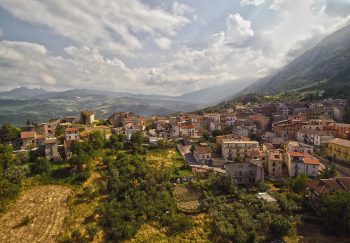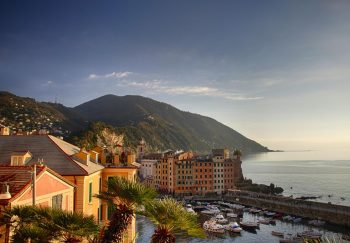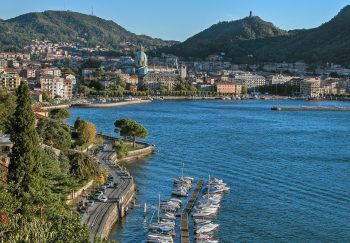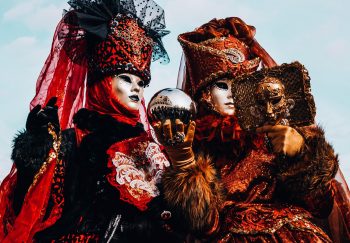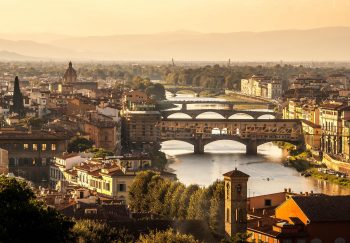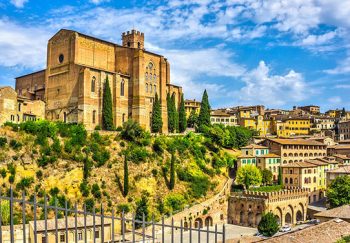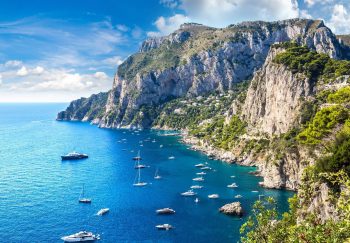When my students were anxious about learning enough Italian in time for their trip, one of the things that I told them was that they wouldn’t starve if they didn’t know a lot of Italian. We are all familiar with many Italian terms and dishes because of the widespread popularity of Italian cuisine.
This always consoled my students a little, until I said:
“Of course there isn’t an Italian food. ‘”
Blank stares.
(Which could be what you’re showing me right now through your screen.
It’s true. It doesn’t even exist. It has never existed. It is partly due to the relative newness of Italy’s country – unified only in the 19th century, Italy is much younger than the United States. This fact is great to share at your next cocktail party. How could there ever be “Italian cuisine” if there weren’t an entire country of Italy but rather several regions with their own traditions and governments?
Even though it has been over 100 years since Italy was established, Italians are still more attached to the area they hail from than the whole of Italy. It’s not just that Italians aren’t as mobile as residents in other countries (especially the United States), but it is extremely common for generations of families to live in the same place (and sometimes the same house) over time.
All of this makes sense, and it is clear that the Italian nation would be less meaningful than one’s home country. There are few better examples than food to show how important regional identity is for modern Italians.
There are certain dishes that have been exported from Italy to other parts of the world, as well as from one region to another. For example, pizza can be found in almost every region of the country. However, it was created in . It would not be surprising if you thought that a pizza made in Venice was just so.
There are 20 regions of Italy and many more provinces within them than I can count. A gastronomic map quickly becomes a complex web of specialties and ingredients. This perspective can be very helpful in determining a traveler’s dining plan.
What is Italian food?
(I know, it’s obvious – I spent so much time telling you that Italian food doesn’t exist. And now, this? Keep on reading, this is going to be something.
Although there’s no comprehensive list of Italian food dishes, there are three main themes that all good food from Italy has to offer.
Only one thing I can say about all Italian food that is authoritatively true is that it is regional.
Once you have a plan for your Italy trip, make sure to research the ingredients and dishes that each region and city has. Also, consider the seasons. This will give you a much wider range of options for menu items than you might expect, and more delicious than your imagination can handle.
What is Italian food?
Some “Italian restaurants” outside of Italy don’t help to correct the common misconceptions that foreigners have about Italian food.
(I’m lookin’ at you, Olive Garden.)
It’s not common to eat spaghetti and meatballs in Italy. Yes, Italians do eat meatballs but they are served with the main course. Italian meatballs are known as “polpette” and are usually large enough to be a main dish (served with the sauce in which they were cooked). You can also find meat sauces to go with specific pastas like ragu alla Bolognese. However, if you are looking for authentic Italian spaghetti and meatballs, you won’t find it.
Pizza is a popular food export from Italy and it’s everywhere now. Pizza toppings in Italy tend to be more minimal than what you are used to. It is possible to make a mistake when translating a pizzeria’s menu from Italian to English. It might be tempting to start with something basic, like your favorite pizza at home, in order to compare it with the one in Italy. But the menu does not have a P and “peperoni,” in Italian, is not a thinly-sliced spicy sausage. Instead, you will get a pizza with peppers. The salame piccante is the best option if you want the authentic Italian pepperoni.
Starbucks isn’t doing travelers any favors either. They give people the false impression they know Italian coffee words. Latte is an Italian word. It is a Italian word that means “milk.” However, it does not refer to “espresso with cream”. If you go to a coffee shop in Italy and order a “latte”, you may get an unusual look. Then you will be offered a glass of milk. If you’re lucky enough, the barista will recognize that you are “not from around this parts” and ask some clarifying questions in order to determine what you really want. It is also a true Italian word that means “cookies”, plural. If you ask for “un biscotti”, it means that you are asking for “one cookie.” Biscotto is the singular.
Yes, it is true for panini too.
One of my favorite not-really-Italian-food misconceptions is “Alfredo sauce.” It’s based on a dish that most Italians have eaten at one time or another, but only at home, and probably only when they weren’t feeling well. Pasta with a little butter and parmigiano, is an Italian version of Saltines, 7-Up, cinnamon bread, or rice. It’s also what your parents would give you when you were sick. This comfort food, which is based on home, became a huge American hit after a couple of Hollywood stars from the 1920s visited Rome. The couple dined at a restaurant owned by Alfredo, an Italian chef who served simple pasta dishes with butter and cheese to ease morning sickness. They loved the same dish he served to his wife and told their friends about it. Alfredo’s Fettucine was requested by a lot of Americans.
It is still the original restaurant, which is now a tourist attraction.
It’s clear that you will recognize most of the words on Italian menus. However, it is a good idea to do some research before you go. Many travelers go to Italy’s restaurants in a false sense security and end up disappointed. They then limit their choices to restaurants that have multiple languages.
Handy Dining Resources
I’ve always loved a book that was out of print. If you can find Pat Mozersky’s “Italy : The Hungry Tourist” online, or in your local bookstore, do yourself and your stomach a favor and get it.
The Italy Marling Menu Master will provide translations of Italian words, but not regional information.
There are many other Italian menu translators available – ebooks, apps, books and even apps. Some helpful information is also included in good guidebooks. If the translator doesn’t already include this information, make sure you do some research on regional specialties.
